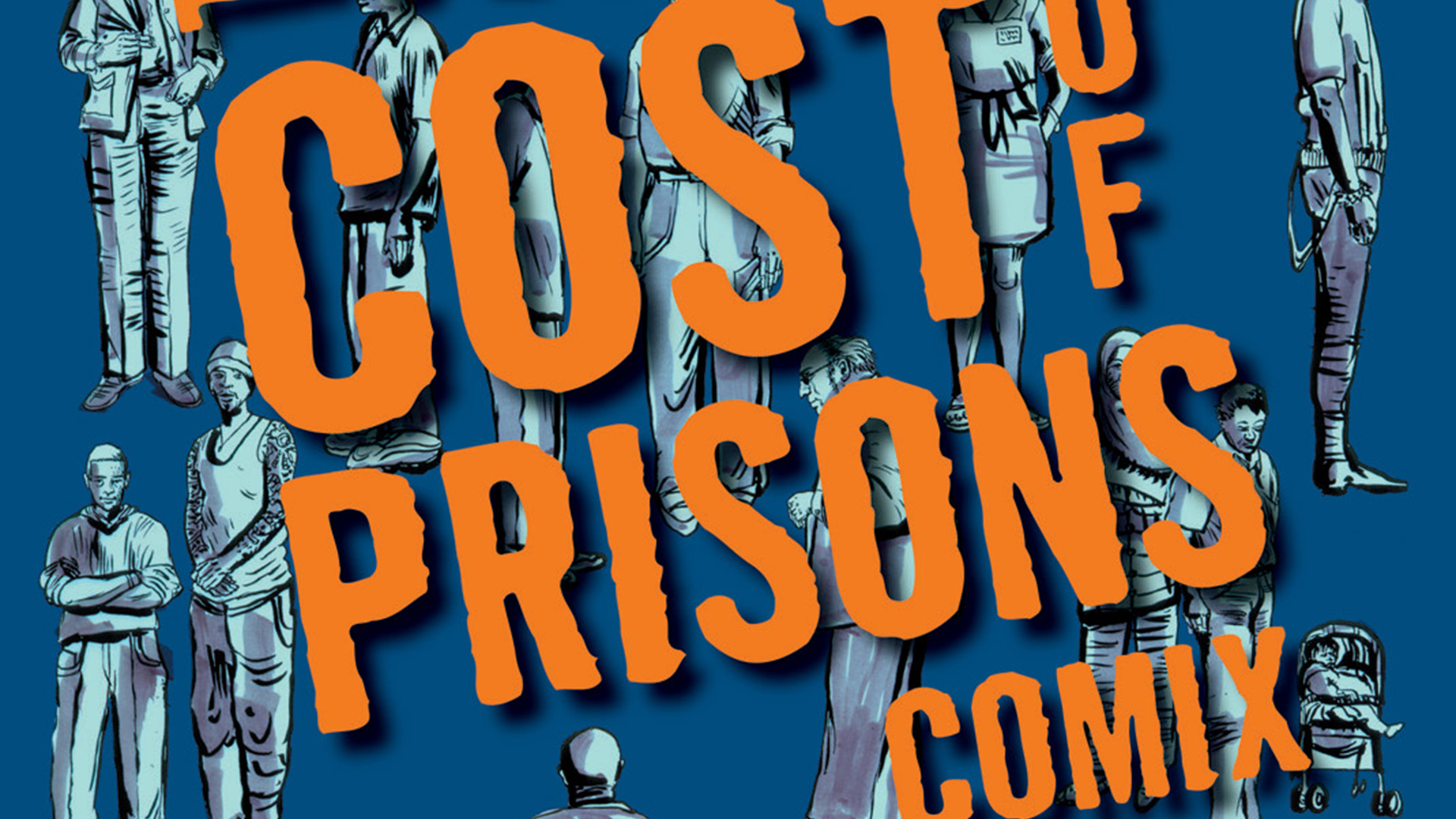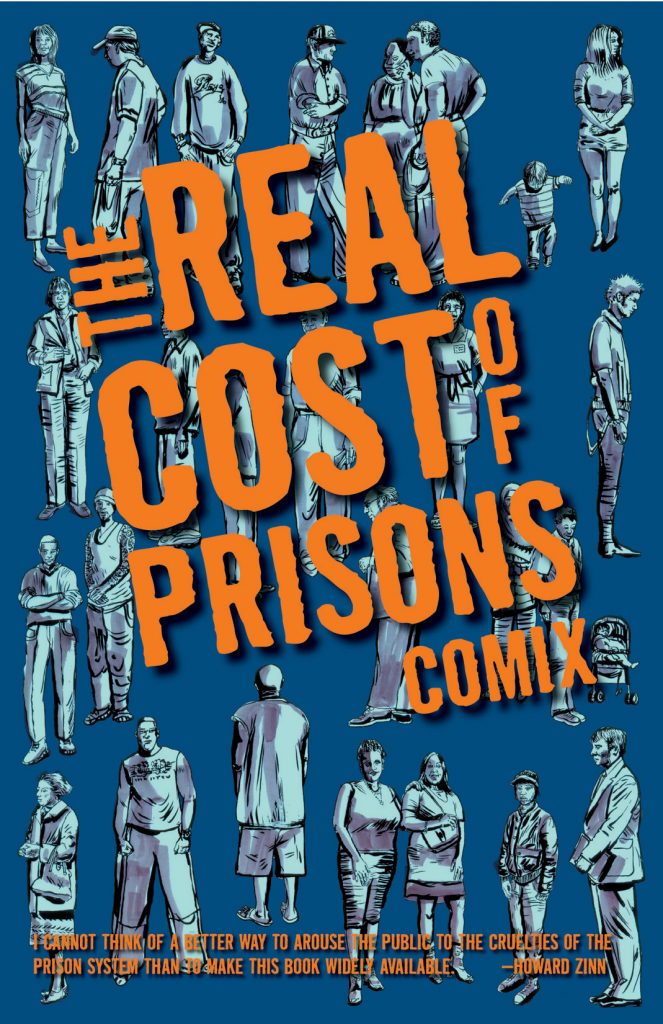By Josh MacPhee
Just Seeds Blog
The Real Cost of Prisons covers similar material, but is a completely different take on it. This is primarily a paperback compilation of 3 comic books produced by the Real Cost of Prisons Project in order to educate prisoners and the public. The project is a nation-wide public education campaign designed to illustrate in plain and simple language what the real costs of prison are in our society. Since the 1970s the levels of incarceration in this country have skyrocketed, but there has been little to know public dialog about the reasons for this, or what it all costs, not just in financial terms, but the human costs. These comics were designed as popular education tools, and are being used as just that. Tens of thousands of copies have found their way into high school classrooms, prison study groups, politicians desks, and activist hands.
Comics are a powerful medium for breaking down complex ideas into frame by frame visual explanations, and that’s just what this book does. The Project was smart to approach 3 political comics veterans, all with experience working on World War 3 Illustrated, the longest running political comics magazine in the US. “Prison Town: Paying the Price,” drawn by Kevin Pyle, is an overview of how prisons are paid for, who pays the real costs and how prison construction effects the communities they are placed in. “Prisoners of the War on Drugs,” drawn by Sabrina Jones, exposes the forces at work behind drug laws and drug-related imprisonment. “Prisoners of a Hard Life: Women and their Children,” drawn by Susan Willmarth, is a touching collection of first person narratives about how prison has deeply affected women and children.
As this is an art bllog, let me talk a bit about the art. Kevin Pyle’s comic is a visual tour-de-force. Ever since his early World War 3 comics about prisons, I’ve always felt Pyle’s unique smudged drawing style perfectly captures the creepy feeling that prisons create; the idea something else is going on beyond what the eye can see, that the images, like the workings of state repression, won’t stand still long enough to get a clear image of what is really going on. Somewhat unfortunately this unsettled feeling carries into almost all his frames, even the ones focused on restorative justice and alternatives to the cruelty of prisons. Sabrina Jones is at her peak, using bold organic lines to powerfully carry us through the story and information. The material is dense and difficult, so I commend her efforts to tame it. My only complaint is that I would like to have seen more large images, full page graphics that frame the smaller panels and give us a macro view. Although Susan WIllmarth has done comics for World War 3 before, she is the artist I’m the least familiar with, but is an exciting surprise. I think her comic is my favorite, graphicly it reads as an exciting clash between Raymond Pettibone and Lynda Barry. It is much looser than the previous two stories, the raw style bringing us deep into the lives she’s narrating. I’m not a comics expert, but this seems like a great example of the comic books’ visual narrative structure being used to compelling lay out important social and political material.
These two books illustrate two very different possible relationships between art and social injustice. The Real Cost of Prisons uses art by practiced professionals as a tool to teach about and explain issues to wide and diverse audiences. It plays to the strengths of an established form (the comic) and lays out a clear path for the reader to better understand the workings of the US prison system. On the other hand, Illustrations from the Inside argues that creativity is a raw tool for the liberation of the creator. The audience is secondary; we are voyeurs, allowed a quick peek into the lives of kids in prison. The art can educate people, that is much less important than the possible transformative effect it can have on the artists themselves.







